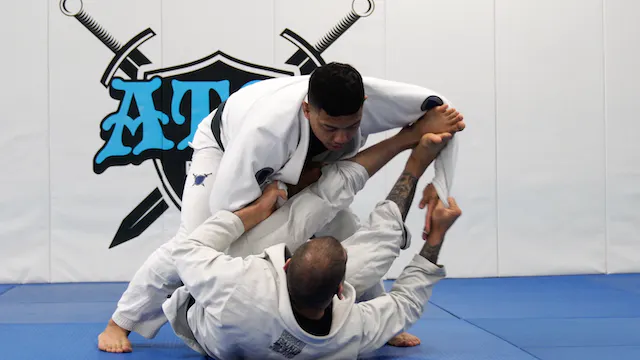The X-pass is a fundamental technique in Brazilian Jiu-Jitsu that allows you to pass your opponent’s guard and gain a dominant position. It involves driving your knee across your opponent’s legs and controlling their hips, effectively neutralizing their guard. In this article, we will focus on the X-pass and its variations, including the long step, knee slice, and over-under passes. We’ll also cover the principles of passing the guard, such as controlling the inside space, creating angles, and maintaining pressure. By the end of this article, you’ll have a better understanding of how to execute the X-pass and add new options to your guard passing game.
Understanding the X-pass
The X-pass is a guard passing technique that involves driving your knee across your opponent’s legs and controlling their hips to neutralize their guard. It’s an effective way to pass the X-guard, which is a popular open guard that can be challenging to deal with. The X-pass can be executed in various ways, but they all share the same principle of controlling your opponent’s hips and limiting their mobility.
Establishing Your Base
Before you attempt the X-pass, you need to establish a strong base to prevent your opponent from sweeping you or submitting you. You should start by kneeling beside your opponent’s legs and controlling their ankles or feet. Your free hand should be posted on the ground, ready to post and base out if your opponent tries to sweep you. Keep your weight forward and your head low to minimize your opponent’s leverage.
Breaking the Leg Grip
One of the most common obstacles to executing the X-pass is your opponent’s leg grip. Your opponent will often use their legs to control your movement and prevent you from passing their guard. To break the leg grip, you can use various techniques, such as the foot trap, the leg drag, or the knee cut. The foot trap involves trapping your opponent’s foot between your legs and pushing it down, while the leg drag involves pulling your opponent’s leg to the side and stepping over it. The knee cut involves driving your knee through your opponent’s legs and cutting across their guard.
Executing the X-pass
There are several variations of the X-pass, each with its own strengths and weaknesses. One popular variation is the long step, which involves stepping over your opponent’s leg with your free leg and establishing side control. Another variation is the knee slice, which involves slicing your knee through your opponent’s legs and establishing side control or knee ride. The over-under pass is another effective variation that involves passing one of your opponent’s legs over and one under your body.
Variations of the X-pass
There are several variations of the X-pass, each with its own strengths and weaknesses. One popular variation is the long step, which involves stepping over your opponent’s leg with your free leg and establishing side control. Another variation is the knee slice, which involves slicing your knee through your opponent’s legs and establishing side control or knee ride. The over-under pass is another effective variation that involves passing one of your opponent’s legs over and one under your body.
Principles of Guard Passing
To become proficient at passing the guard, you need to understand the principles of guard passing, such as controlling the inside space, creating angles, and maintaining pressure. Controlling the inside space means controlling the area between your opponent’s legs and preventing them from establishing grips or attacking you. Creating angles means changing your position relative to your opponent’s guard and creating openings for your passes. Maintaining pressure means keeping your weight forward and your opponent’s hips pinned to the ground, making it difficult for them to move or escape.
In conclusion, the X-pass is an effective guard passing technique that can help you neutralize the X-guard and control your opponent’s hips. By understanding the principles of guard passing and mastering the X-pass and its variations, you can become a formidable guard passer and add new tools to your BJJ game.
Hey there! Just a heads up that some of the links in this post are affiliate links, which means that if you click on them and make a purchase, I may earn a commission. But don’t worry, it won’t cost you anything extra – in fact, you might even get a sweet deal! Plus, every purchase made through one of these links helps support my blog and keep the content coming. So, if you do decide to make a purchase, thank you so much for your support – it means the world to me!
All the best,
Will








Pingback: From Beginner to Advanced: Learn How to Pass the Butterfly Guard Like a Pro in BJJ – Jiu Jitsu Hub